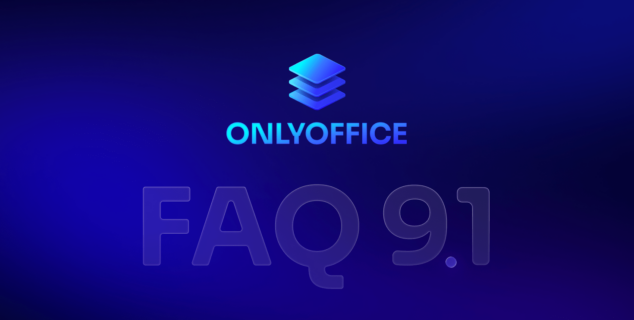Student portfolio made easy: Definition, tips & fillable templates
Creating a student portfolio doesn’t have to feel overwhelming. In fact, when approached the right way, it becomes an exciting project that highlights who you are, what you have achieved, and how far you have come.
Let’s see what a portfolio is and how to create it.

What is a student portfolio?
A student portfolio is a carefully organized collection of academic and personal work. Unlike a stack of papers or random projects stored in different folders, a portfolio tells a clear story of a student’s learning journey. It shows progress over time, provides evidence of skills, and demonstrates the ability to set goals and achieve them.
A portfolio typically includes written work such as essays, reports, or research projects, but it can also showcase creative outputs like artwork, multimedia projects, or presentations. Certificates, awards, and teacher feedback are often part of the collection as well. Many students also add a personal section with reflections or journal entries, explaining what they learned from each experience and how it shaped their development. In this sense, a portfolio is both a showcase and a mirror—it displays the best achievements while helping the student understand themselves as a learner.
Examples of student portfolios
The exact form of a student portfolio depends on age, interests, and goals. For younger learners in elementary school, a portfolio might include drawings, short stories, reading lists, and teacher feedback. This helps both the student and parents see how skills such as reading and writing are developing.
In high school, a portfolio could contain essays, science lab reports, certificates from competitions, and personal reflections on how certain skills have improved. Such a collection becomes useful when applying for scholarships or college programs.
For students in creative fields, portfolios often focus on showcasing talent. A digital collection may include photos of paintings, sketches, or design projects, each accompanied by short notes about the inspiration or techniques used. Fashion students, for example, can include not only photos of their designs but also scans or photos of fabric swatches, mood boards, and textile samples to give a fuller picture of their creative vision. This highlights not just the final work, but also the creative process behind it.
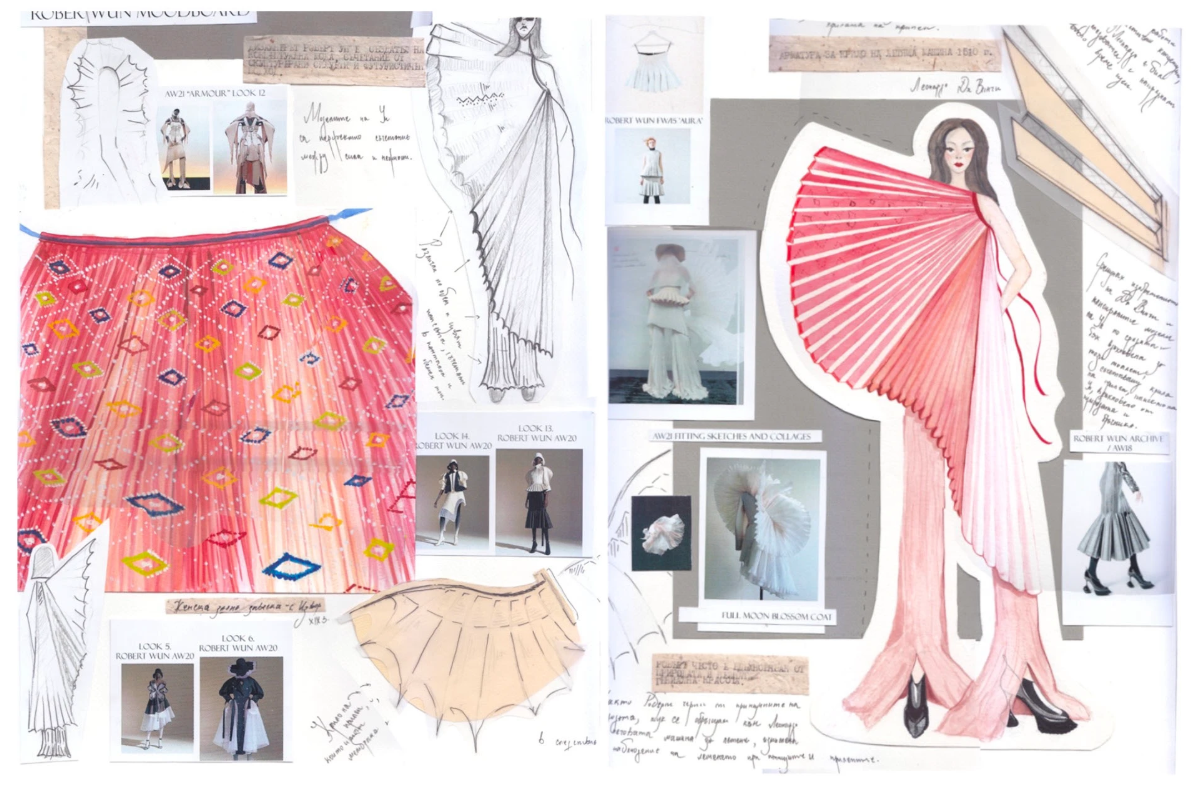
At the university level, a portfolio is often more professional. It might include research papers, seminar presentations, internship documentation, and feedback from professors. Organized in a clear way, this portfolio becomes an excellent resource for applying to graduate studies or starting a career.
These examples show that a portfolio can take many different forms. What matters most is that it reflects the learning journey and presents achievements in a clear and meaningful way.
Why create a student portfolio?
Building a portfolio brings many benefits, both practical and personal. On a practical level, it helps keep academic life organized. Instead of searching through piles of documents or old files, everything important is stored in one place. This system saves time and reduces stress, especially when deadlines are approaching.
From an academic perspective, a portfolio allows students to track progress. Looking back at earlier work and comparing it with more recent projects makes it easier to see how writing style, problem-solving skills, or creativity have improved. This reflection is motivating—it shows that learning is a journey of continuous growth.
Another key reason is that portfolios are powerful tools for applications. When colleges or employers ask for proof of abilities, showing a well-structured portfolio immediately sets a candidate apart. It demonstrates not only what the student can do but also the ability to present information professionally. For example, aspiring translators or copywriters can create portfolios with samples of their texts, translations, or advertising campaigns to showcase their writing style and versatility.
Finally, on a personal level, portfolios encourage self-awareness. By reflecting on strengths and challenges, students gain a clearer sense of who they are and where they want to go.
Tips for building a great portfolio
Building a strong portfolio takes planning, organization, and continual reflection. Here are some detailed tips:
- Define your purpose first – Decide why you are making the portfolio. Is it for personal reflection, for school assessment, or to apply to college or internships? Knowing the purpose helps choose what to include.
- Select meaningful work – Don’t just include everything. Pick samples that show growth, challenge, creativity, or improvement. Sometimes a draft + final version of a work is useful to show progress.
- List skills and set goals – Along with your work samples, include a section that shows what skills you have (e.g. teamwork, digital literacy, problem solving) and what goals you are aiming for (short-term and long-term). This shows direction and self-awareness.
- Include a resume or CV – If you have relevant experience (projects, certificates, extracurriculars), a resume helps pull it all together. Even small things count.
- Create a clear table of contents – Especially for longer portfolios, a contents page helps readers (teachers, peers, or application reviewers) find things quickly.
- Add reflections often – After each piece or section, add a note about what you learned, what was hard, what you might do differently next time. These reflections are very valuable.
- Choose the right format: digital, paper, or both – Consider who will view your portfolio and how. If you go digital, you can include multimedia (videos, audio, interactive work). If paper, focus on clean presentation, good photos/scans, durable covers. Using both can be ideal.
- Ensure design is clean and consistent – Use consistent fonts, heading styles, spacing, layout. Let your content shine without distracting decoration.
- Make it shareable and easily accessible – If digital, think about how to share (PDF, link, cloud storage). Make sure the file sizes are reasonable, links that work, images clear. If printing, ensure good quality.
- Review and update regularly – As you complete new work, replace or add to older items, refine reflections, adjust goals. The portfolio should grow with you, not stay static.
Digital vs. Paper Portfolios
When creating a portfolio, one of the first decisions to make is whether it should be built in paper or digital format. Paper portfolios are traditional and have a tangible quality—teachers and parents can physically flip through them, and they don’t require any special tools to access. However, they are harder to share, bulky to carry, and can easily be damaged or lost.
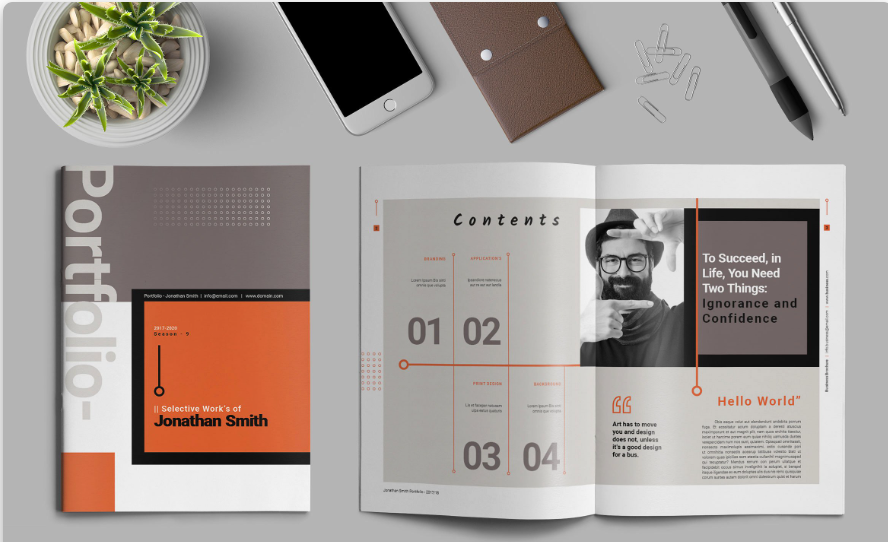
Digital portfolios, on the other hand, are much more flexible. They allow for the inclusion of multimedia elements such as videos, audio recordings, and interactive presentations, which give a richer picture of skills and creativity. They are easy to update and share with just a link or email attachment, making them ideal for modern applications. Many schools and universities now encourage students to use digital portfolios because of their convenience and versatility.
In many cases, a combination of both formats works best. Maintaining a digital version for sharing online while keeping a printed version for in-person presentations offers the best of both worlds.
Ready-to-use templates in ONLYOFFICE
Creating a portfolio from scratch can take time, but the good news is that you don’t need to start with a blank page. In ONLYOFFICE, we offer a variety of ready-to-use templates designed to make the process easier. Each template has a clear structure and can be customized with your personal content in just a few clicks.
For example, if you are preparing for college applications, the Resume/CV template is a great addition to present your skills and experience professionally.
We also provide specialized CV templates tailored for translators, helping them highlight language pairs, certifications, and translation experience in a clean and professional format.
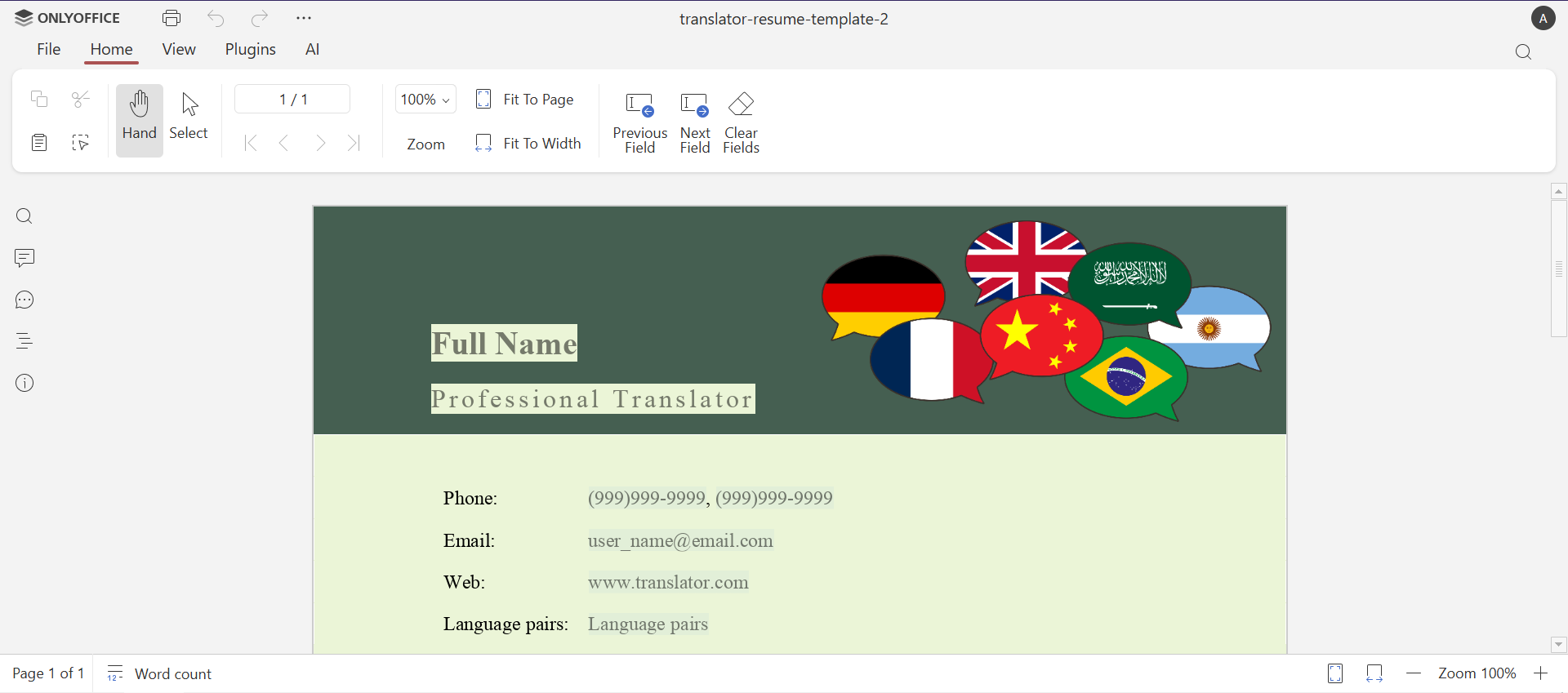
Students working on longer projects or theses can also benefit from the Research Report template, which helps organize complex documents into well-structured chapters.
For those in the architecture field, there’s even a project brief template designed to showcase design concepts, technical details, and project stages in a structured way.
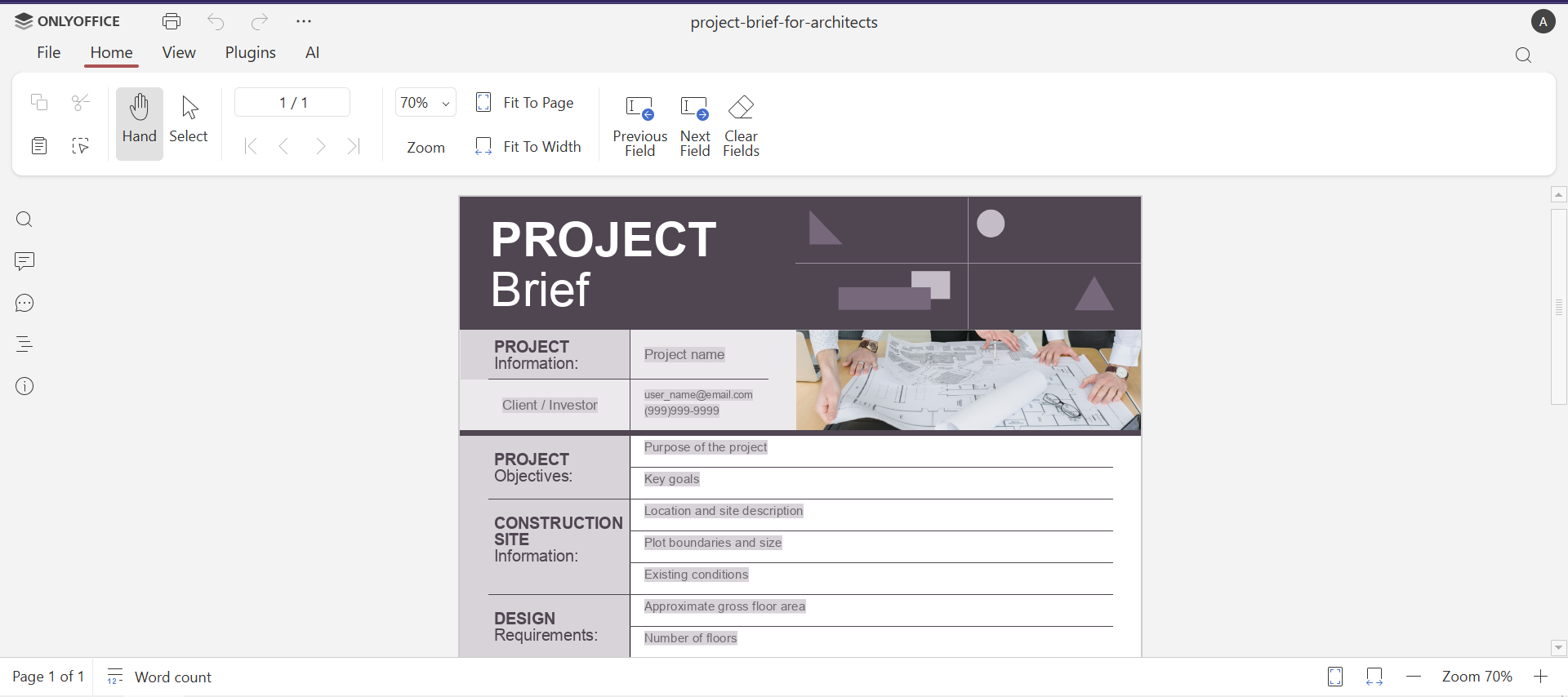
Browse our complete templates library to discover plenty of options. Fill out online, or download the file.
By using these ready-to-use resources, you save time, stay organized, and ensure your portfolio looks polished and professional from the very beginning.
Get ONLYOFFICE and start building your student portfolio
Create, edit, and customize your documents online or offline. Use ready-to-edit templates for resumes, research reports, and project briefs, and make your portfolio stand out.
Conclusion
Creating a student portfolio doesn’t have to be daunting. Whether you choose a paper format, a digital version, or a combination of both, the key is to focus on showcasing your growth, skills, and achievements in a clear and meaningful way.
By planning thoughtfully, selecting meaningful work, reflecting on your learning, and using tools like ONLYOFFICE’s ready-to-use templates, you can build a portfolio that not only impresses teachers, colleges, or employers but also helps you understand your own learning journey.
A well-crafted portfolio is more than just a collection of work—it’s a powerful tool for growth, self-expression, and future opportunities.
Create your free ONLYOFFICE account
View, edit and collaborate on docs, sheets, slides, forms, and PDF files online.


